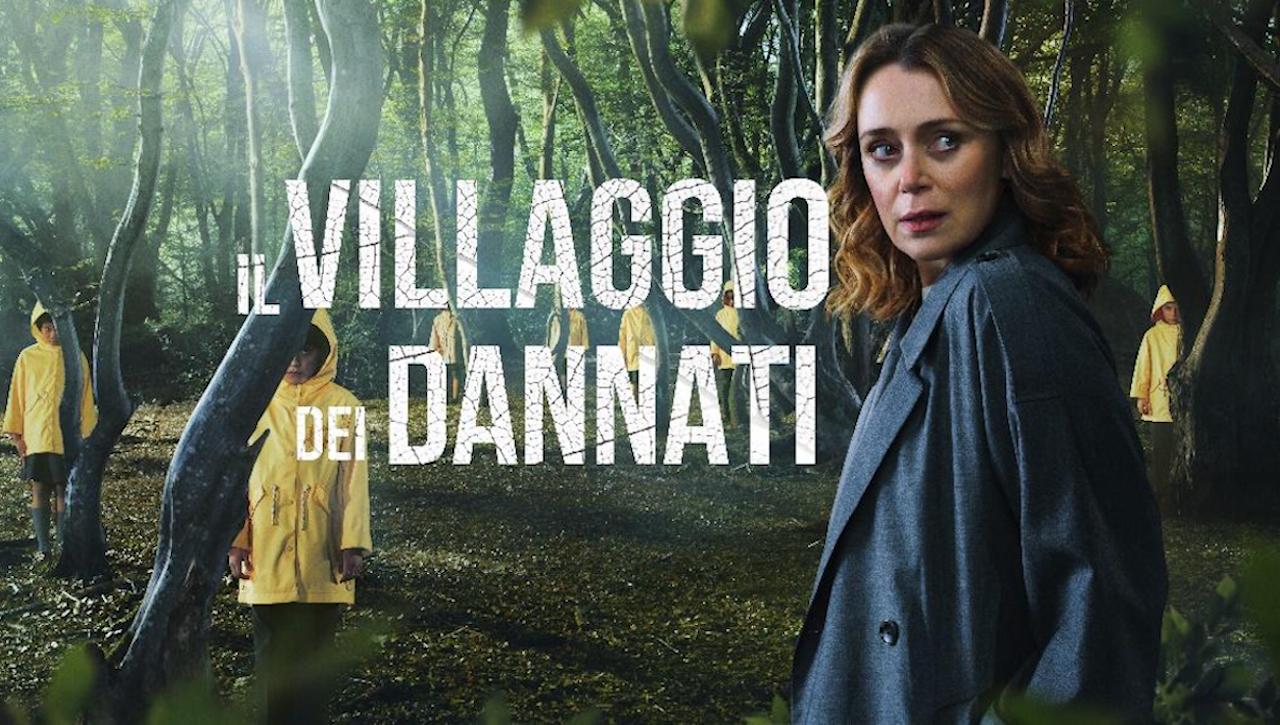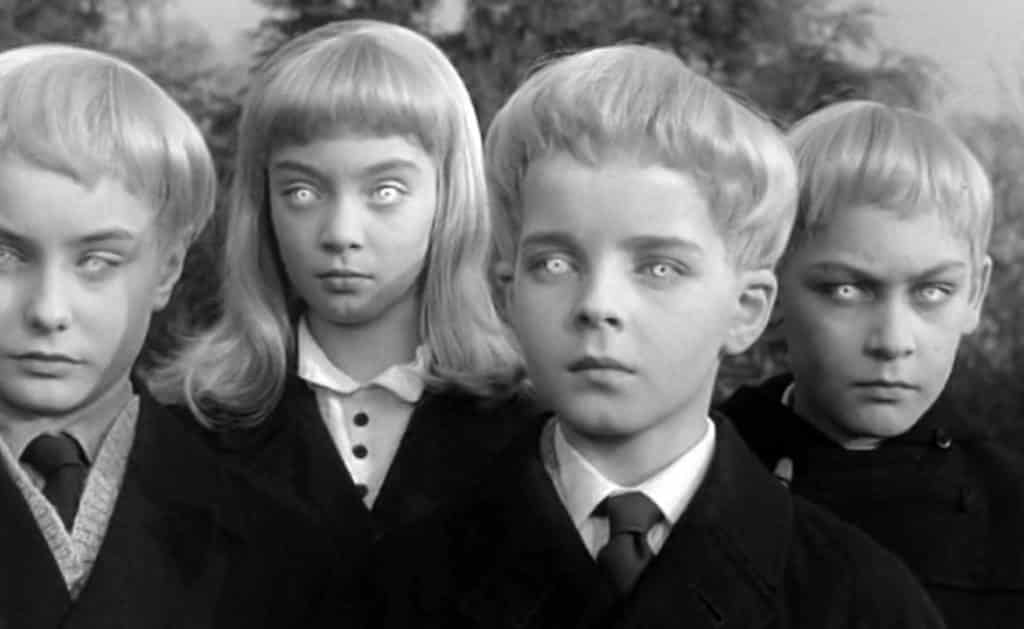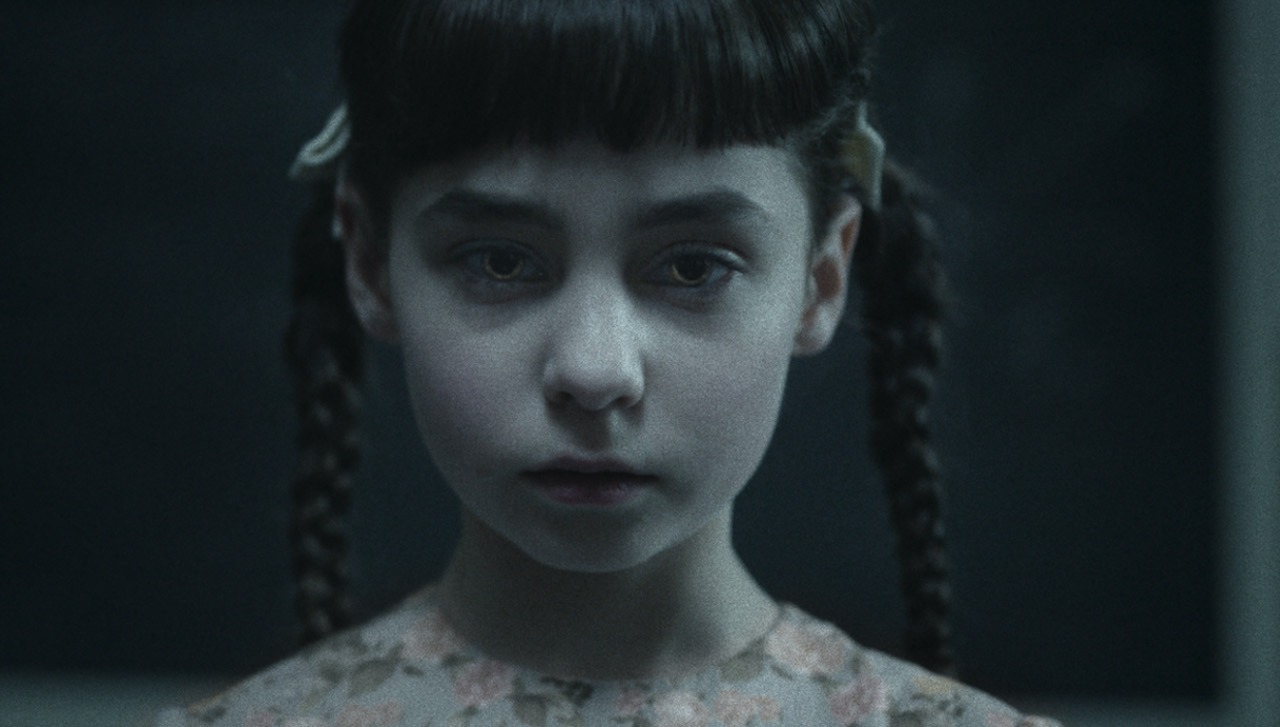A disturbing fairytale with a Hitchcockian structure in crescendo.
A collective mind capable of haunting, possessing, and harassing with its diabolical thoughts, becomes the villain, the nightmare that is getting darker, of the town of Midwich. The Village of the Damned – The Midwich Cuckoos: the series Sky Original that mixes fantasy and horror, a modern and dark reinterpretation of the science fiction classic The children of the invasion from John Wyndham already adapted in the past, also from John Carpenter in the 1995 horror of the same name. The serial show, a television adaptation created by David Farr, which stars Alice Troughton ( A Discovery of Witches ) as main director assisted by Jennifer Perrott and Börkur Sigthorsson, arrives with its first episodes on June 17 on Sky and streaming on NOW, and proposes the story of an inexplicable collective conception with damn disturbing effects. A sinister journey accompanied by an escalation of devilry: possessions and controls over the body, perfidious connections, fainting and absurd deaths, supernatural powers: children are the terrifying characters of The Village of the Damned. In the cast of this seven-episode limited series, which will not have a second season, there are, among others, Keeley Hawes (Bodyguard, It’s a Sin) And Max Beesley (The Outsider, Suits), both nominated for BAFTAs.
The Village of the Damned – The Midwich Cuckoos: welcome to Midwich, the town of the “children of evil”
The Village of the Damned – The Midwich Cuckoos begins with a flash-forward, a suspenseful sequence: in the town of Midwich, in the south of England, a man and a woman hurry to prepare their bags to escape from their home, but once they arrive outside they meet their daughter Anna, who , with a not exactly reassuring look, he asks: “Mom what have you done?. ” The mechanism used in the representation is Hitchcockian; from the first sequence the viewer is informed that something important and unpleasant will happen, when the work has not actually started yet. The English series introduces us to the plot through an alternating montage, tells stories (involving several women including Anna’s respective mothers, Ivy and Neitan), and which take place simultaneously in Midwich, a quiet and green place that appears perfect for raising children. But on the night of a weekend in May (Friday 6 May), at 9:47 pm, an inexplicable event occurs: all the inhabitants of a fair portion of the residential area of the town – both indoors and outdoors – lose consciousness without an apparent reason. After a series of power sags in the city, followed by random and unpredictable impulses, a total blackout occurs. For twelve hours you cannot enter the affected area, because you risk facing the same fate as the others: anyone who enters the city loses consciousness, moreover, for security reasons, everyone is prevented from entering. As if that weren’t enough, phones, satellites, cameras and camcorders don’t work. Nobody knows exactly what happened. But after twelve hours everything finally seems to return to normal, when everyone comes back from fainting. But what happened at that time? An inexplicable fact: every woman of childbearing age present in the area affected by the blackout event became pregnant at the same time. And one soon realizes, through the fetal DNA test, that there are no traces of paternal DNA. But then, are they whose children? What is their origin? Babies conceived in these mysterious circumstances make up the special observed group called “The Midwich cuckoos”: the Midwich cuckoos.
Due to their presence, nothing will be the same as before in the Midwich community, which becomes divided and distrustful. The mysterious and sinister conception that took place on the night of May 6, by an unknown external force, soon became a state secret; even the “cuckoo mothers” are isolated together with their children, and constantly monitored as government case studies; the world of these families is shrunk, these people are forced to lead a secret life. In addition, “the cuckoos of Midwich”, the children of that cursed night, do not want to leave the city for any reason, they begin to show their dark powers, and it seems that together they are concocting a plan, something big. Meanwhile, a psychologist, Cassie’s mother (who gave birth to little Ivy) played by Keeley Haweswill follow these women in their difficult journey – from pregnancy to raising children – flanked by Jodie’s brother-in-law played by Max Beesley.
A disturbing fairytale with a Hitchcockian structure in crescendo

The representation of small and vague signs of threat (control of the characters, the death of the dog, the hand stopped to burn), then gradually more massive attacks, which become more dangerous and uncontrollable: this is the fundamental structure of the TV series, which is explicitly inspired by the mechanisms of Hitchcockian suspense, and which pays homage to the director of The conspiracy of the innocents and of Birdswith some details, shots of birds breaking apart in flight: a visualization of an archaic fear like the fear that beasts will rebel against humans and regain control of the world. And what is feared even in this inexplicable journey, episode after episode, when in the village of the damned take place the most tense scenes, and the viewer is kidnapped in the state of uncertainty-apprehension-anxiety linked to the evolution of what is about to happen. The curiosity and attraction of the horrible increases because, despite the narrative action being a little too dilated, the work manages to drag mothers struggling with children with “spiritual problems” into the torment, whose behavior, especially from age of two, suggest a demonic action …
The Village of the Damned: “The greatest trick of the devil is to make believe that it does not exist”

He said it Baudelaire: “The devil’s greatest trick is to make believe that he doesn’t exist“. And in fact only when mothers realize that there is something wrong, when they begin to block the will of the children, and try to team up to find a remedy – when in a word they want to “find Satan” – they get weird in front of the reactions, the strange behaviors , and to the “malefics” of the little ones. In the dramatic scene of the opera the chorus is all female: maternal love and fear overlap in the show whose “winning card”, to put it in English, is the element of mystery. The Village of the Damned is a psychological horror based on the fears of the characters (in this case of the mothers of Midwich), on their emotional suffering, on the worries, the blocks, the instabilities and the insecurities in the face of an inexplicable and unnatural threat like the evil will of a child . The mystery unfolds over the course of the episodes, adding questions after questions, and offering very few answers in a path on parenting that is very out of the ordinary, which sheds light on the worst fear a mother can have: that the blood of one’s blood wishes to make her feel bad. bad. While the grown-ups have now slipped into the nightmare, the restlessness grows with the growth of the little ones, more and more acute, gifted and connected. The television adaptation, although embellished with an interesting photograph, does not shine for its technique, but presents some elements of novelty, and manages to intrigue above all for the psychological analysis of the characters – of Anna’s mother, for example – for the representation of their reactions, for the feeling of positive union that animates women, and which acts as a counterpoint to the evil feeling of the progeny. David Farr has hit the mark, although this cannot be defined as a series without defects.
Direction – 3
Screenplay – 3
Photography – 3.5
Acting – 3
Sound – 2.5
Emotion – 3
The Village of the Damned: review of the horror series – Cinematographe.it

